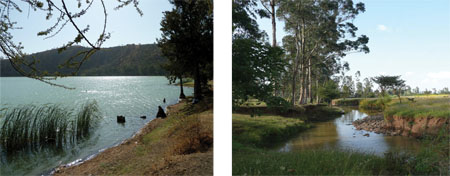Streams and rivers
Streams and rivers are not only potential water sources for humans, they are also important aquatic habitats for many plants and animals. Pollution can have a damaging effect on aquatic ecosystems as well as potentially on human health.
Aquatic ecosystems
Ecosystem means a community of living organisms that interact with each other, plus the environment in which they live and with which they also interact. An ecosystem therefore includes plants, animals and microorganisms and their physical environment which may be land, trees, soil, ocean, freshwater, etc., and also includes the relationships between all these components. Aquatic ecosystems can be categorised as marine ecosystems in the ocean, and freshwater ecosystems in rivers, lakes and other surface water bodies.

The effect of pollution on streams and rivers depends on the type of pollutant. Some substances are acutely toxic to aquatic plants and animals and will cause dead zones downstream from the pollutant source in which no living organism is found. Other pollutants are health concerns to humans, but have little impact on aquatic communities.
One of the most common types of freshwater pollutant is biodegradable organic material. When a high concentration of organic material such as raw sewage (human excreta) is discharged into a stream, the levels of dissolved oxygen in the water may fall so low that the water is completely deoxygenated.
Why does the dissolved oxygen level fall if organic material pollutes a river?
Bacteria that break down the organic material require oxygen to survive. They use the oxygen dissolved in the water causing the level to fall.